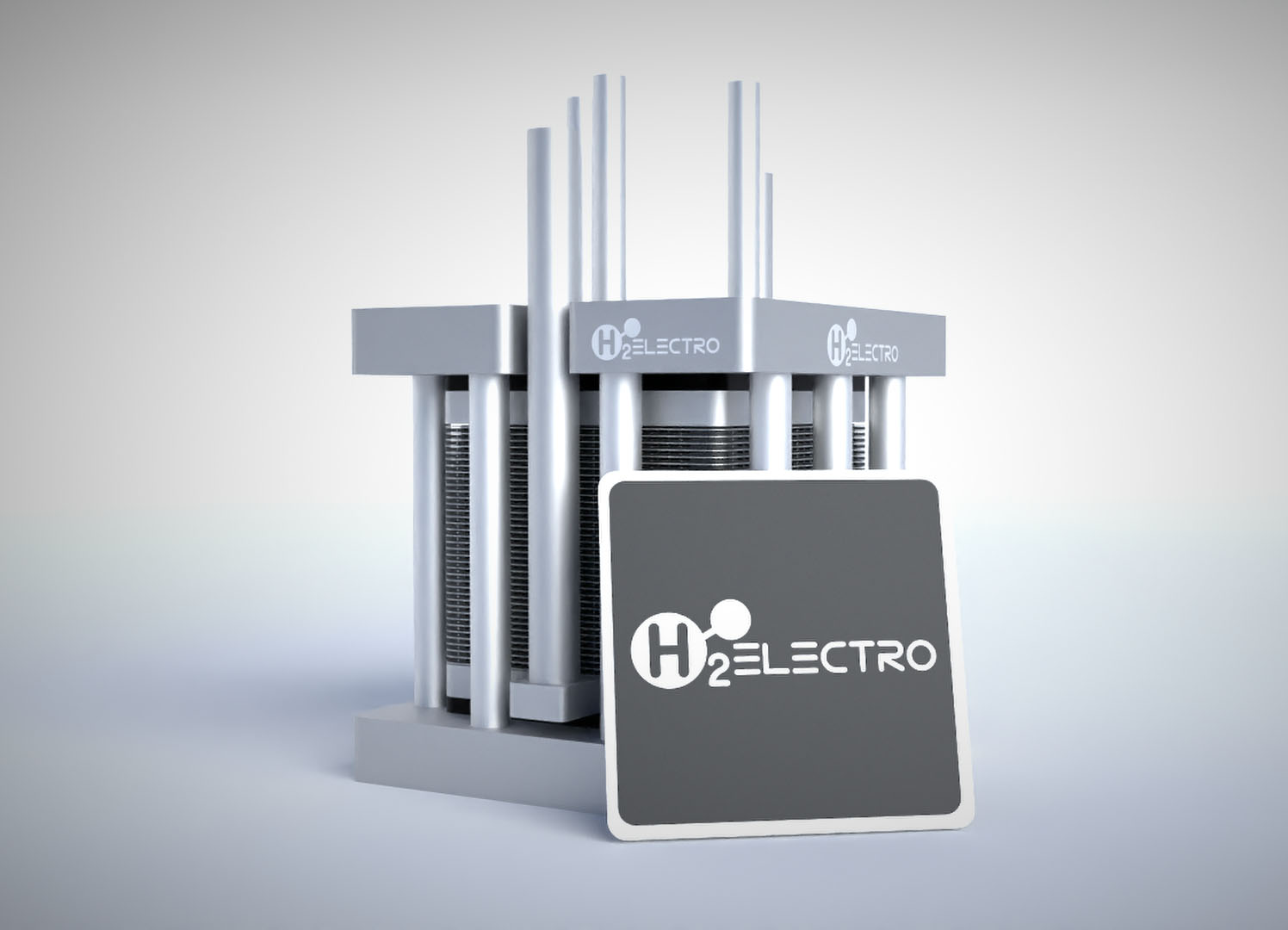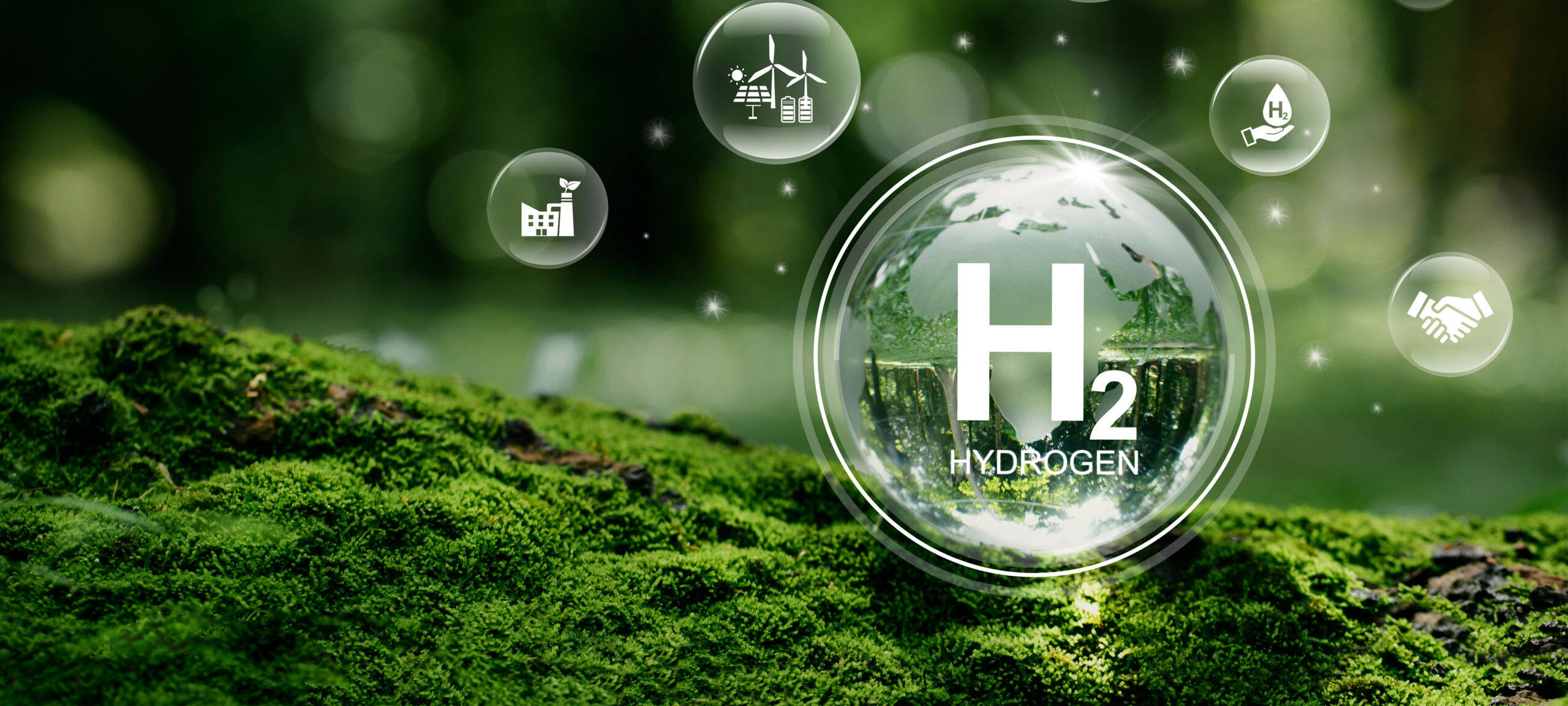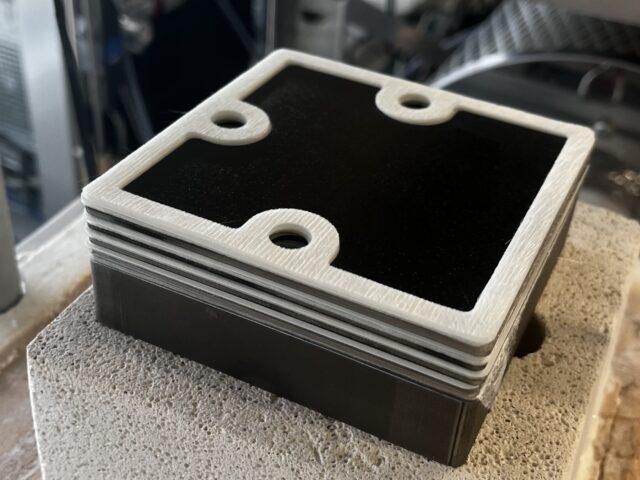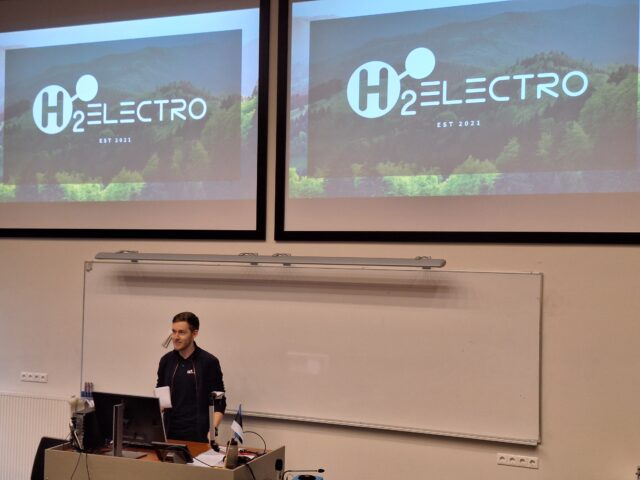PRODUCER OF HIGH EFFICIENCY SOLID OXIDE ELECTROLYSIS CELLS AND STACKS
Established in 2021, H2Electro specializes in manufacturing high-efficiency solid oxide electrolysis cells, paving the way for the widespread adoption of green hydrogen and the transition away from fossil fuels. Our innovative solid oxide cells operate at temperatures ranging from 800 to 850°C, optimizing water electrolysis efficiency by minimizing electrical losses. Unlike traditional electrolysis stacks, our High-Temperature Electrolysis (HTE) systems require no precious metals, offering a sustainable solution for green hydrogen production.
At the core of our technology is the use of all-ceramic fuel electrodes, a departure from conventional nickel cermet materials like Ni-YSZ. These fully ceramic electrodes boast exceptional stability, even in the presence of oxygen, sulphur, or carbon contaminants. As a result, our stacks eliminate the need for a protective gas atmosphere or extensive gas purification, significantly reducing system costs associated with balance of plant (BOP).
Our HTE systems play a crucial role in advancing the future of energy by enabling the efficient storage of renewable energy and facilitating the decarbonization of key industries such as ammonia and steel production. By harnessing intermittent energy resources like wind and solar on a larger scale, our technology offers a sustainable alternative to fossil fuels, bolstering energy security and driving positive ecological impact wherever it is implemented.

OUR PRODUCT
Our next-generation high-temperature all-ceramic electrolysis cell, which operates at temperatures between 800-850°C, offers several advantages over traditional systems, including:
- 30% increased efficiency
- No reliance on precious metals
- The ability to utilize industrial waste heat to decrease electricity consumption
- Modular design for a range of electrolysis capacities
- Longer lifespan due to the use of advanced ceramic electrode materials
- The ability to produce syngas (H2 + CO) from H2O and CO2, which can be used as a precursor material for e-fuels
- Improved redox stability compared to traditional nickel ceramics
- A larger active surface area, allowing for the use of less electrode material at the same current density
- Higher resistance to sulphur poisoning and carbon deposition
MANAGEMENT TEAM

HENRIK HAL
CEO & Co-Founder

PHD SILVER SEPP
CTO

DIMITRI OPALNIKOV
COO
KEY PARTNERS

UNIVERSITY OF TARTU

DYNELECTRO

EAS

XRP LEDGER FOUNDATION

ESTONIAN RESEARCH COUNCIL
AREAS OF USE
Steam electrolysis
In the domain of steam electrolysis, H2Electro's SOECs represent a breakthrough solution for sustainable hydrogen production. By efficiently splitting water vapour into hydrogen and oxygen using electrical energy, these innovative cells offer unmatched efficiency and scalability. Their ability to utilize renewable energy sources further enhances their environmental sustainability, contributing to the global transition towards cleaner energy alternatives.
Green steel
In green steel production, H2Electro's SOECs serve as catalysts for reducing the industry's carbon footprint and advancing environmental sustainability. By harnessing hydrogen generated through electrolysis, these cells facilitate the elimination of CO2 emissions in steel production, marking a significant stride towards mitigating greenhouse gas emissions. One standout feature of H2Electro's SOECs is their capability to diminish the steel industry's CO2 footprint by up to 90%, underscoring the transformative potential of integrating hydrogen into steelmaking processes.
Co-electrolysis
In the realm of co-electrolysis, H2Electro's SOECs demonstrate remarkable versatility and efficiency. By performing co-electrolysis of water and carbon dioxide, these innovative cells enable the production of syngas, a valuable precursor for various chemical and fuel synthesis processes. The syngas produced can be utilized in Fischer-Tropsch processes to manufacture chemicals and hydrocarbon fuels, contributing to a diverse range of industrial applications.
Synthetic fuels
In the arena of synthetic fuel production, H2Electro's SOECs play a pivotal role in unlocking the potential of clean energy solutions. By combining hydrogen generated from SOECs with CO2 captured from industrial processes or the atmosphere, synthetic fuels can be produced, offering a versatile and sustainable energy source. Leveraging the hydrogen produced by H2Electro's SOECs, methanol—an adaptable liquid fuel and chemical feedstock—can be synthesized, contributing to a diverse range of industrial applications.
Green ammonia
H2Electro's SOECs are uniquely positioned to revolutionize the field of ammonia production due to their operational temperature range of 800-850°C. This temperature range aligns perfectly with the requirements of the Haber-Bosch process, the primary method for synthesizing ammonia. By operating at elevated temperatures, H2Electro's SOECs simplify the integration of hydrogen production with ammonia synthesis, streamlining the overall production process.
RECENT NEWS
H2Electro and Enefit Solutions Cooperation
H2Electro and Enefit Solutions have signed a memorandum of understanding, paving the way for future collaboration in advancing hydrogen production...
Chemistry Master’s program at the University of Tartu.
Our Grant Funding and Project Manager, Karl Markus Villemson, recently had the honor of presenting at the University of Tartu's...
HANNOVER MESSE 2024
Exciting times at HANNOVER MESSE! The H2Electro team is thrilled to be part of the largest industrial trade fair showcasing...





